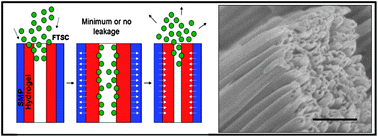A stimuli-responsive coaxial nanofilm for burst release
Abstract
Polymeric nanofilms which change dimensions in response to environmental stimuli, such as temperature, open the possibility for the development of smart surfaces. We demonstrate the synthesis of a coaxial nanofilm with a hydrogel core and a shape memory shell to form temperature activated


 Please wait while we load your content...
Please wait while we load your content...